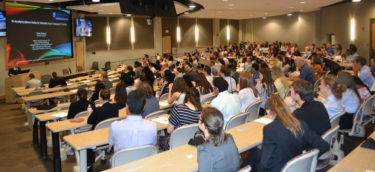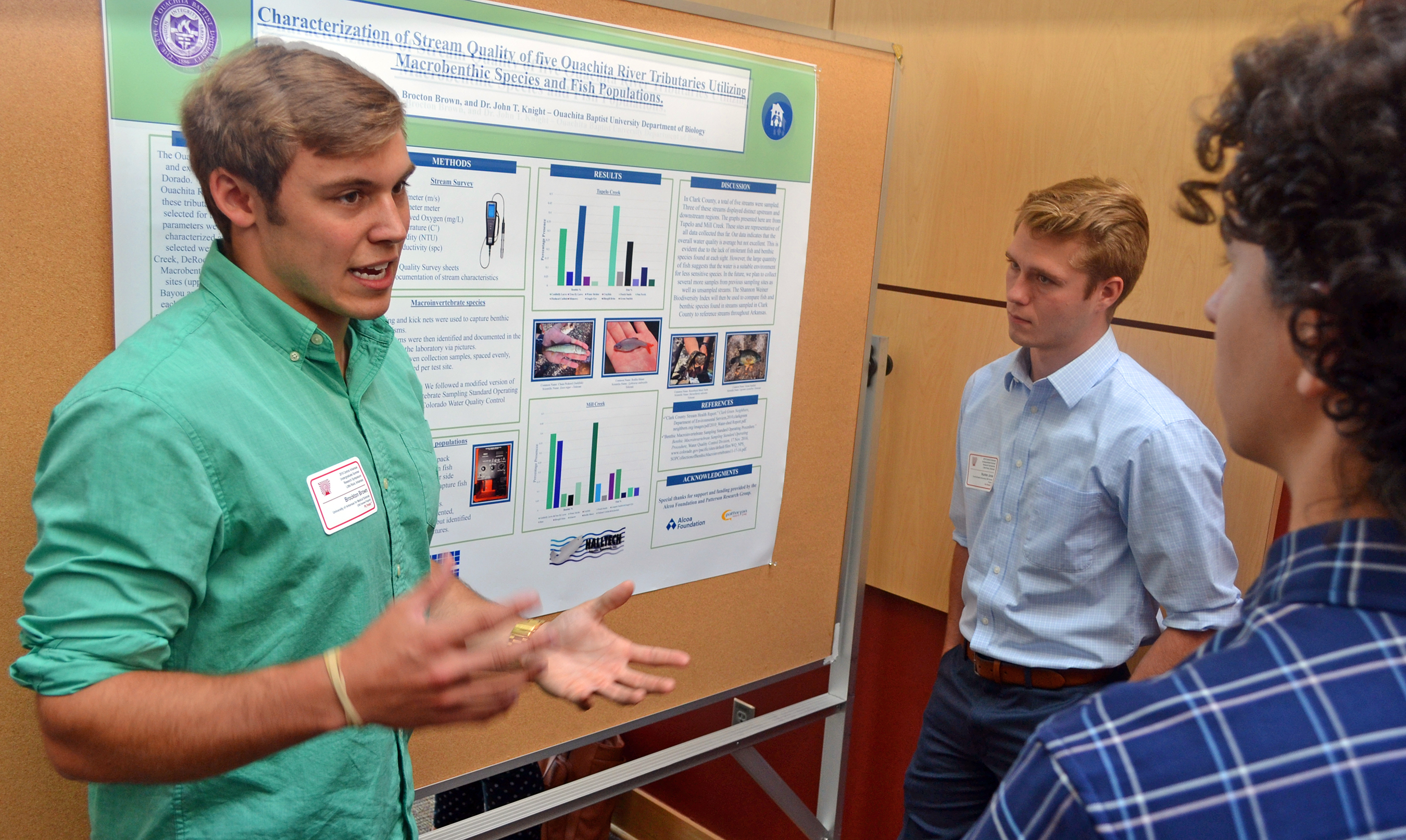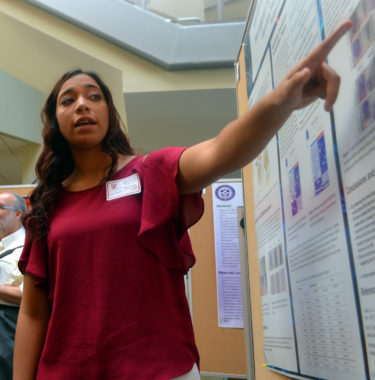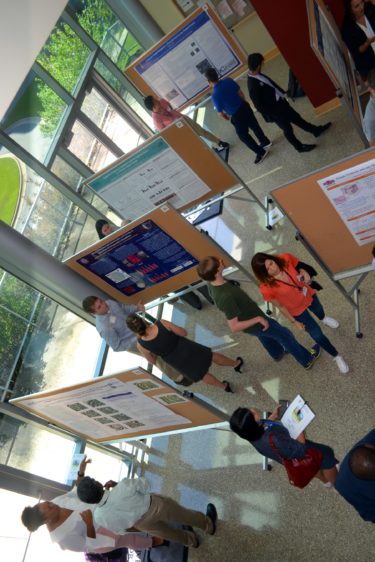Undergraduates Learn By Doing at Summer Research Symposium
| Learning by doing and reinforcing concepts through presentation — those practices were the core lessons on display at the eighth annual Central Arkansas Undergraduate Summer Research Symposium at UAMS.
About 115 undergraduate students from across Arkansas and the nation gathered in the I. Dodd Wilson Education Building to give poster presentations and oral presentations on summer research projects. The projects were the culmination of weeks — sometimes years — of work with various programs, some at UAMS and others at colleges and universities across the state, as well as the U.S. Food and Drug Administration National Center for Toxicological Research at Jefferson.
“Doing research is the best way to understand research and that’s why we’ve spent so much time and effort making these opportunities available,” said Grover P. Miller, Ph.D., professor in the Biochemistry and Molecular Biology Department in the UAMS College of Medicine.
“If you’re like me, you went into science thinking it was all about doing experiments,” Miller said. “Well, it’s about more than that. Over the summer, you’ve learned a lot of techniques, you’ve learned a lot about your project, but science is really about stories. And so today, you’re going to be telling us your stories. This is part of your journey: to pause, reflect on all you were able to achieve, and tell others about that experience.”
Miller asked how many students had conducted summer research for the first time and about 80 percent of the room raised their hands.
That was the case for Mason Archer, a senior from Ouachita Baptist University in Arkadelphia who worked with the Arkansas INBRE program (IDeA Network of Biomedical Research Excellence).

Laura Osborn of Ave Maria University gives an oral presentation on summer research she did at UAMS.Amy Widner
Archer studied six strains of bacteria that are developing resistance to antibiotics and are problematic in nursing home and hospital settings. They are known as ESKAPE — Enterococcus faecium, Staphylococcus aureus, Klebsiella pneumoniae, Acinetobacter baumannii, Pseudomonas aeruginosa and Enterobacter species. Archer also worked with bacteria commonly found in soil and tested about 14 of these to see if any had antibacterial properties effective against the ESKAPE group.
“I was excited to find that almost all of them were able to inhibit more than one of the ESKAPE pathogens,” Archer said. “So we would hope to use this data in the future to possibly use some of the bacteria to test them against other pathogens as well and potentially produce a new antibiotic from one of them.”

Oral presentations were held in the first-floor auditorium of the I. Dodd Wilson Education Building.Amy Widner
Archer hopes to become a pharmacist. He said the summer research will help him enter pharmacy school in the fall with a deeper understanding of concepts he’ll be studying.
“The research was perfect for me because I was able to work directly with antibiotics, which are — of course — really important for the pharmaceutical industry,” Archer said. “To do research with antibiotics and see firsthand how antibiotics work and how each one effects different pathogens was great.”
Alexis Baker — a senior from Hendrix College in Conway who worked with the Hendrix Odyssey Program for the second year in a row — also thinks her participation in summer research and the Summer Research Symposium will help with her career goals. She wants to be a neurosurgeon and just took the Medical College Admission Test (MCAT).
Baker worked with pain-sensing neurons and clarifying how they develop during the embryonic process.
“I definitely felt like doing summer research was worthwhile,” Baker said. “I learned so much by working in the lab that when I went back into the classroom, I felt like I was way ahead of the other students. I also feel like it helped me prepare for the MCAT.”

Sebastian Bustillo presents his summer research to Alan Diekman, Ph.D., of the Department of Biochemistry at UAMS.Amy Widner
Baker said it’s been important for her to learn to talk about science. Last year, she didn’t present, she just observed her teammates. This year, she was on her own.
“I’ve been practicing on my family,” she said. “I’m the first one to go to college, so they don’t have any idea what I’m talking about. It challenges me to think about it and come up with a way to explain it so that they’ll understand. It will be the same someday when I’m interacting with patients, plus, when I have to really break it down and think about it, it helps me understand it better, too.”
Miller said experiences like Archer’s and Baker’s are by design. He hopes the symposium is realistic and practical for the students, who will encounter similar situations throughout their scientific careers. In addition, the symposium gives them a chance to network with faculty and fellow students and find out more about their future educational and career options.
The symposium was hosted by the Graduate School and Department of Biochemistry and Molecular Biology at UAMS as well as the National Institutes of Health-supported INBRE program and the UAMS Summer Undergraduate Research Program (SURP) to Increase Diversity in Research.



